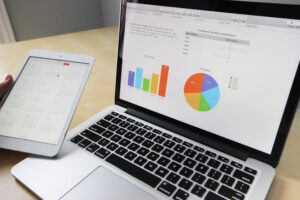Cryptographic assets with unique identification codes and metadata that distinguish them from each another are called non-fungible tokens. Unlike cryptocurrencies, they are not tradable or exchangeable at equivalency. Fungible tokens differ from cryptocurrencies, which are identical and, therefore, can be used for commercial transactions.
Table of Contents
ToggleHow Is an NFT Different from Cryptocurrency?
A non-fungible token (NFT) is generally built using the programming language used for cryptocurrencies like Bitcoin or Ethereum. However, that’s where their similarities end.
Physical money and cryptocurrencies can be traded or exchanged with each other. They’re also equal in value—a dollar is always worth another, and a Bitcoin is always equal to any other Bitcoin. Fungibility makes cryptocurrencies trustworthy for conducting transactions on the blockchain
NFTs are unique. Each has a unique digital signature that makes it difficult for NFTs to ever be exchanged for or equal one another (hence non-fungible).
Any digital image can be purchased as an NFT. You’ll need to decide what marketplace to buy your digital asset from, what type of digital wallet is required to store it and what kind of cryptocurrency you’ll need to complete the sale.
Why Are Non-Fungible Tokens Important?
Non-fungibility tokens are an evolution of relatively simple concepts such as cryptocurrencies. Modern finance systems consist mainly of sophisticated trading and loan mechanisms for different asset types, including real estate, lending contracts, and art. By creating digital representations of physical objects, NFTs are an important step towards reinventing the infrastructure of our cities.
It’s not novel to have digital representations of physical assets, nor is it novel to use unique identification. However, when these ideas are combined with the benefits offered by a tamper-resistant, blockchain-based smart contract system, they become a powerful force for change.
One of the most important benefits of NFTs (nonfungible tokens) is market efficiency. Converting a physical asset into a digitized one streamlines processes and eliminates intermediaries. NFTs represent digital or physical art on a blockchain. They remove the need for agents, and they allow artists to connect directly to their audiences. They can also help improve business processes. For example, an NFC tag for a wine bottle will allow different actors in a supply-chain to interact with it and track its provenance, manufacture, and sale throughout the entire process. For example, consulting firm Ernst & Young has already developed such a solution for one of its clients.
Non-fungibility tokens are also excellent for managing identities. For example, consider the case of physical passports, which need to be produced at each entry and exit point. By converting individual passports (with their own unique identifying characteristics) into NFTs, it is possible to simplify the entry and exit processes across different countries. Identity management can be achieved using NFTs in the digital realm as well as physical objects.
NFTs can democratize investing by allowing people to invest in fractions of real estate. It is much easier for multiple people to share ownership of a digital real estate asset than a physical one. Real estate doesn’t have to be the only asset that can benefit from tokenization. Other types of assets can also benefit from tokenization. Therefore, a painting doesn’t necessarily have to be owned by one person. Its digital equivalent can be owned by multiple people who each own a fraction of the painting. Such arrangements could increase their value and revenues.
The most exciting possibilities for NFTs lie in the creation of new marketplaces and forms of investment. Consider a piece of land divided up into several sections, each containing different properties and features. There are different types of neighborhoods within a city, and each has its own unique characteristics. Each piece of land has different characteristics and prices and is represented by an NFT. Real estate trading, an intricate and bureaucratic affair, can become simpler by incorporating relevant metadata into every unique NFT.
Decentraland is an example of a virtual reality platform that has already implemented such a system. As NFTs become increasingly sophisticated, they may be able to implement the same concept in the physical world.
NFT examples
Here are some examples of NFTs that exist today to help you get an idea of the variety of digital items:
- A unique digital artwork
- A unique sneaker in a limited-run fashion line
- An in-game item
- An essay
- A digital collectible
- A domain name
- A ticket that gives you access to an event or a coupon




